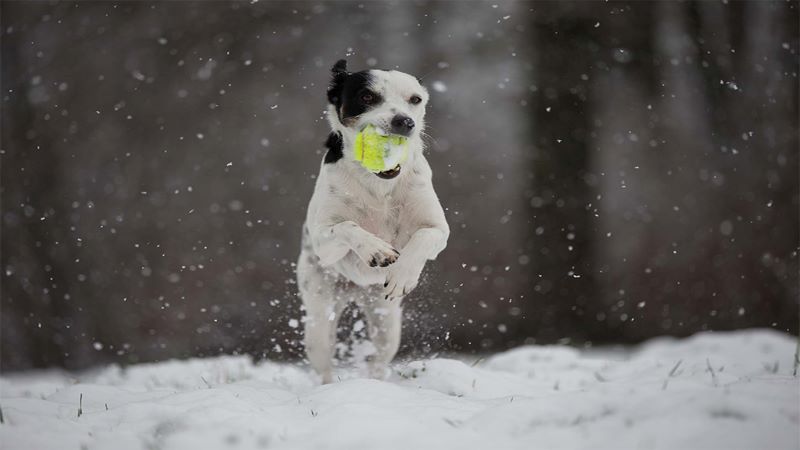Dogs were born to work for a living. Beagles were bred for hunting, Collies for herding, and German Shepherds for protection. So it is no surprise that dogs need exercise in order to be at their best. However, our increasingly sedentary lifestyles mean dogs’ “jobs” are quite the opposite of their natural born instincts.
Three things to know
So, how do we make sure our dogs are getting the exercise they need? Let’s start with three things to know about exercise and your dogs…
-
Exercise is important for all breeds. Whether you own a pug or a border collie, all dogs need exercise in some form. Learning more about your dog's breed and speaking to your veterinarian can help you determine the best exercise regime for your dog's breed.
-
Exercise is important for all ages. Exercise can help young puppies from causing trouble and keep senior dogs more mentally sharp.
-
Exercise is more than just letting your dog outside to play in the backyard. While your pup may enjoy going for a romp in the backyard, taking him for more structured exercise is important as well!
Benefits of exercising your dog
As I mentioned before, most dogs were bred for a purpose. And when dogs are not allowed the activity they need, behavioral problems can arise. According to PetMD’s article, Exercising with Your Dog 101, “Without activity, your dog will become bored, frustrated, and unhealthy.” The benefits of exercise and play include:
-
reducing and/or eliminating unwanted behaviors (destructive chewing, barking, whining)
-
keeping dogs healthy and agile
-
reducing digestive problems
-
maintaining a healthy weight
-
adding years to your senior dog's life
Dog exercise guidelines
Now that we’ve established the reasons for exercise, let’s talk about exercise guidelines and strategies for making it happen. The PetMD article, Exercising with Your Dog 101 states, “Though exercise needs are based on a dog’s age, breed, size and overall health, your dog should spend between 30 minutes to two hours on an activity every day.” Before you begin an exercise program with your pet, be sure you check with your veterinarian during your annual wellness exam to determine exercise guidelines specific to your dog. And be careful about exercising your pet soon after a meal.
Go for a walk
Walking lengthens and improves quality of life--for you and your dog. Walking can regulate weight, improve agility, and aid in digestion. See our post, 3 Reasons to Get Outside and Walk, for more advantages of walking with your dog.
Play dog tag
Remember the games of tag from your youth? Your dog will enjoy this game of chasing as much as you once did. Tag your dog and allow him to chase you. Once he “tags” you back, you chase him.
Run the stairs
In the cold months, it can be difficult to get outside for exercise. Do yourselves both a favor and get your heart rate up indoors. Put on your dog’s leash and take the stairs two at a time. For some variations, try jogging or sprinting the stairs, or take them sideways. Discuss this style of exercise with your veterinarian before taking it on, as it may not be suitable for dogs with certain conditions.
Try Doga, dancing, or skijor
Dog yoga, canine freestyle dancing, and skijor (a type of cross-country skiing), are fun ways to get your blood flowing when it’s cold outside. For more information on these workouts, see our article, Safe Winter Workouts for Dogs.
Provide mental stimulation
Take a new running or hiking path. Introduce new toys and games to your dog. My favorite is the Spot IQ Puzzle, which challenges your dog to work for his treats.
Whatever you do, just make sure to make exercise part of your busy schedule, especially in the winter. Your dog will sleep better, feel better, and behave better with activity built into each day. And you will too!

